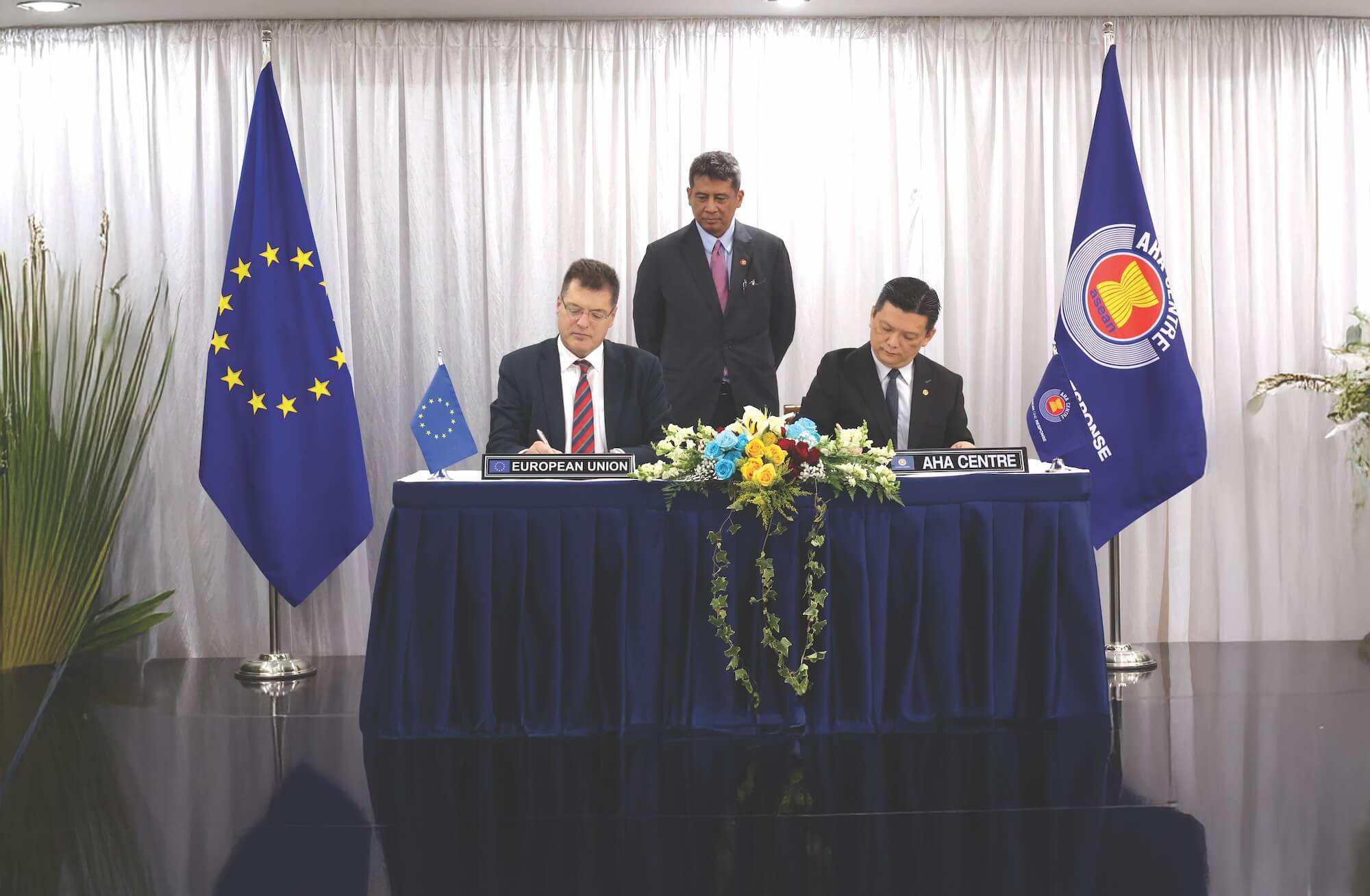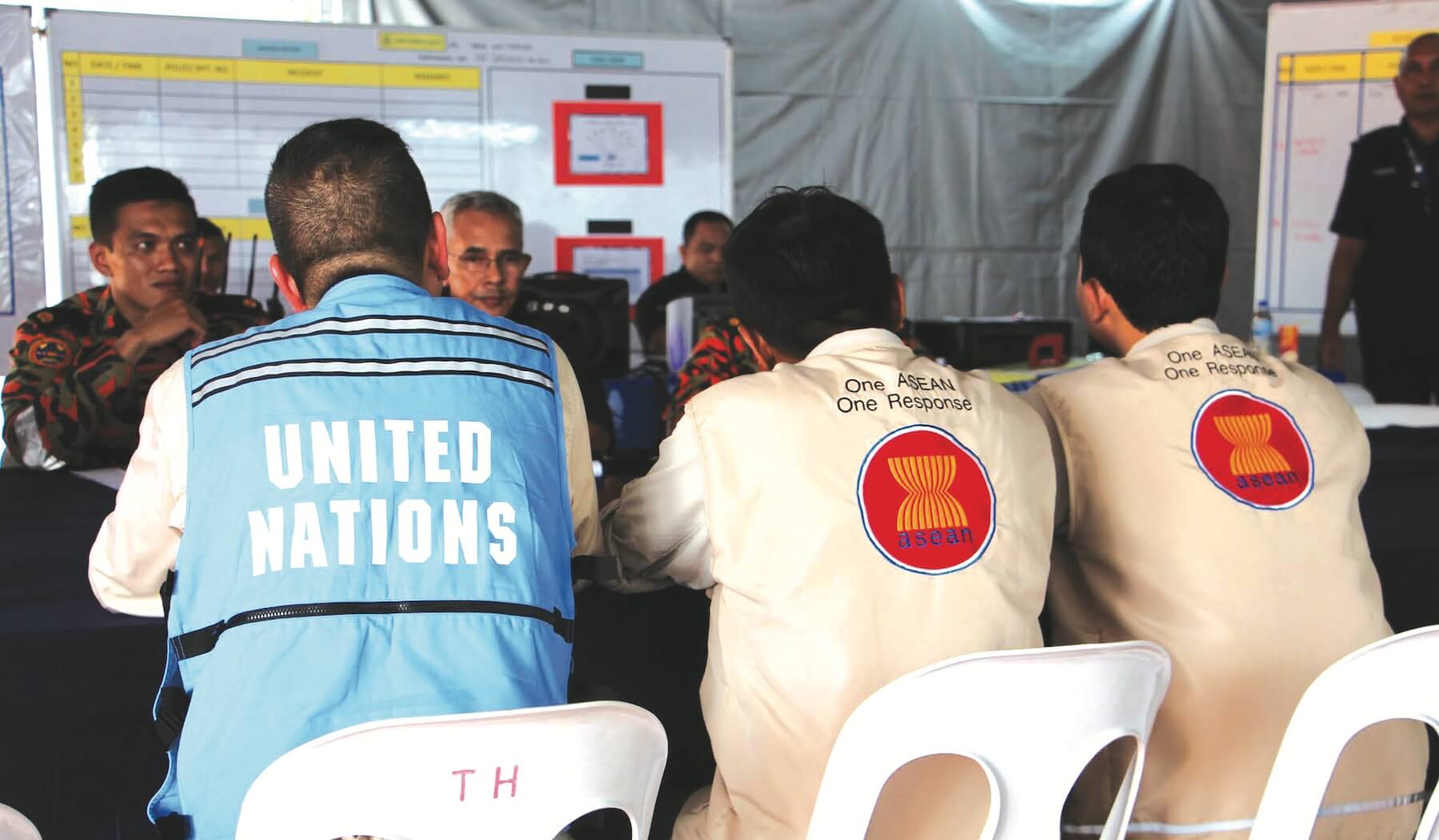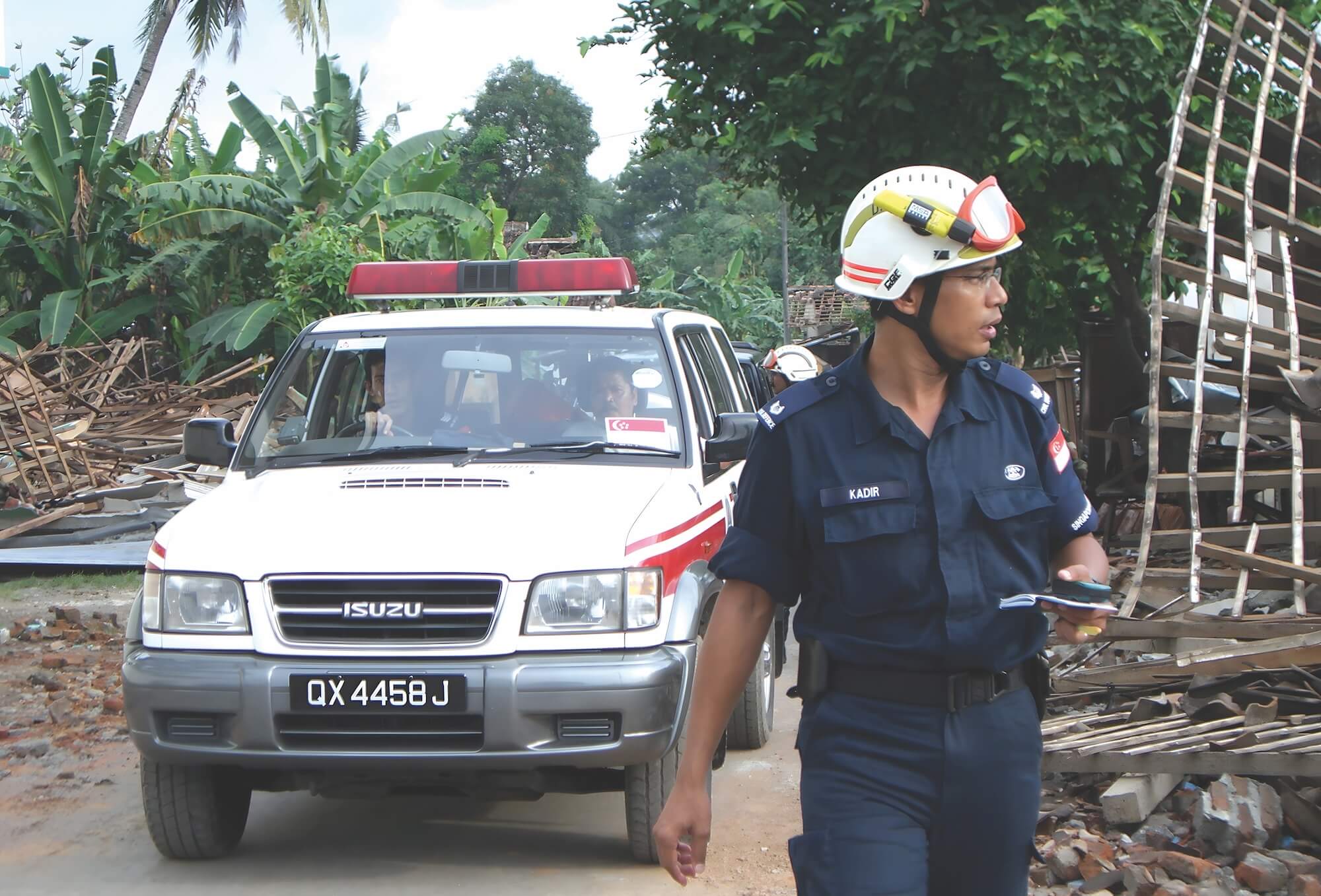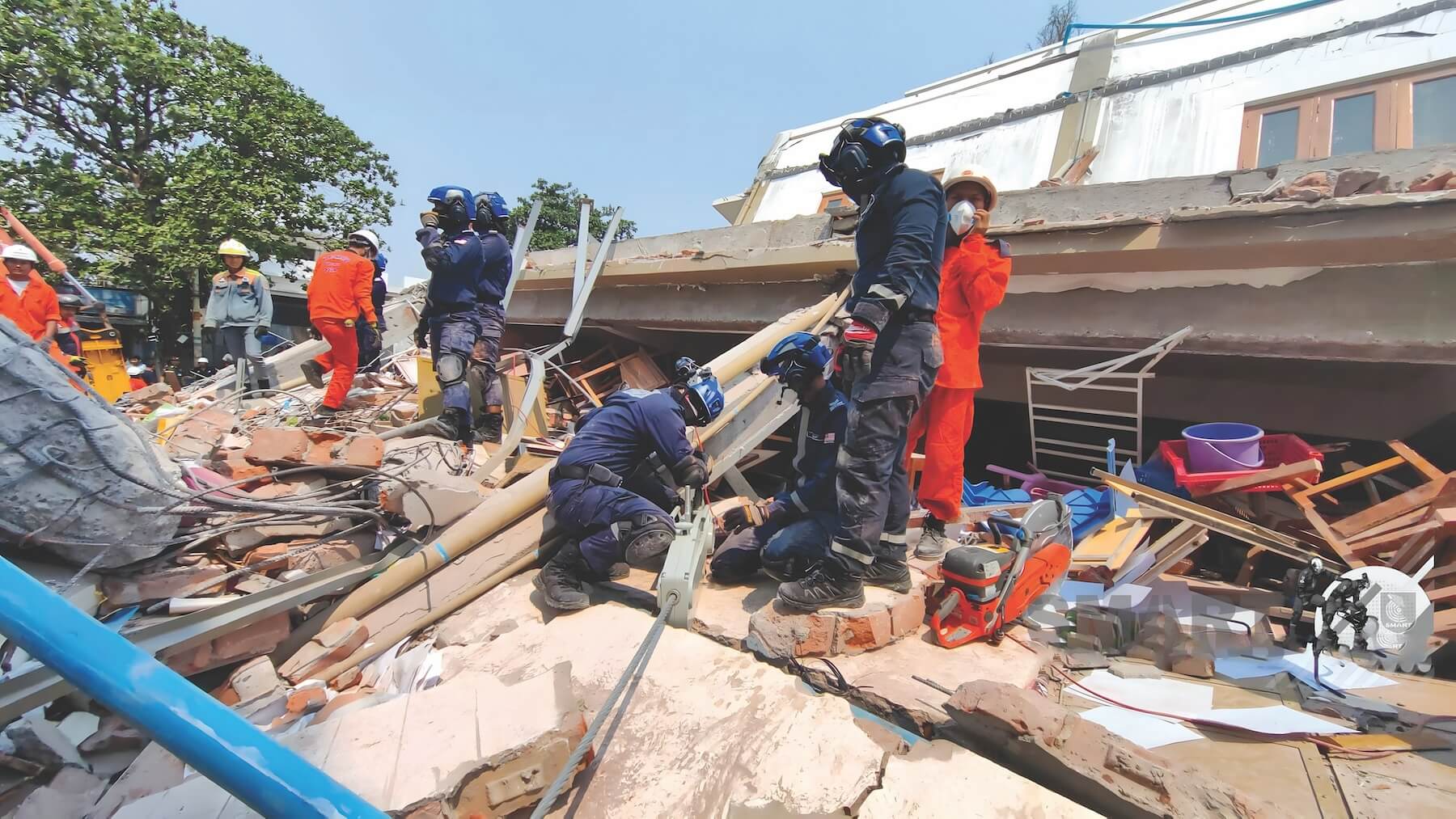
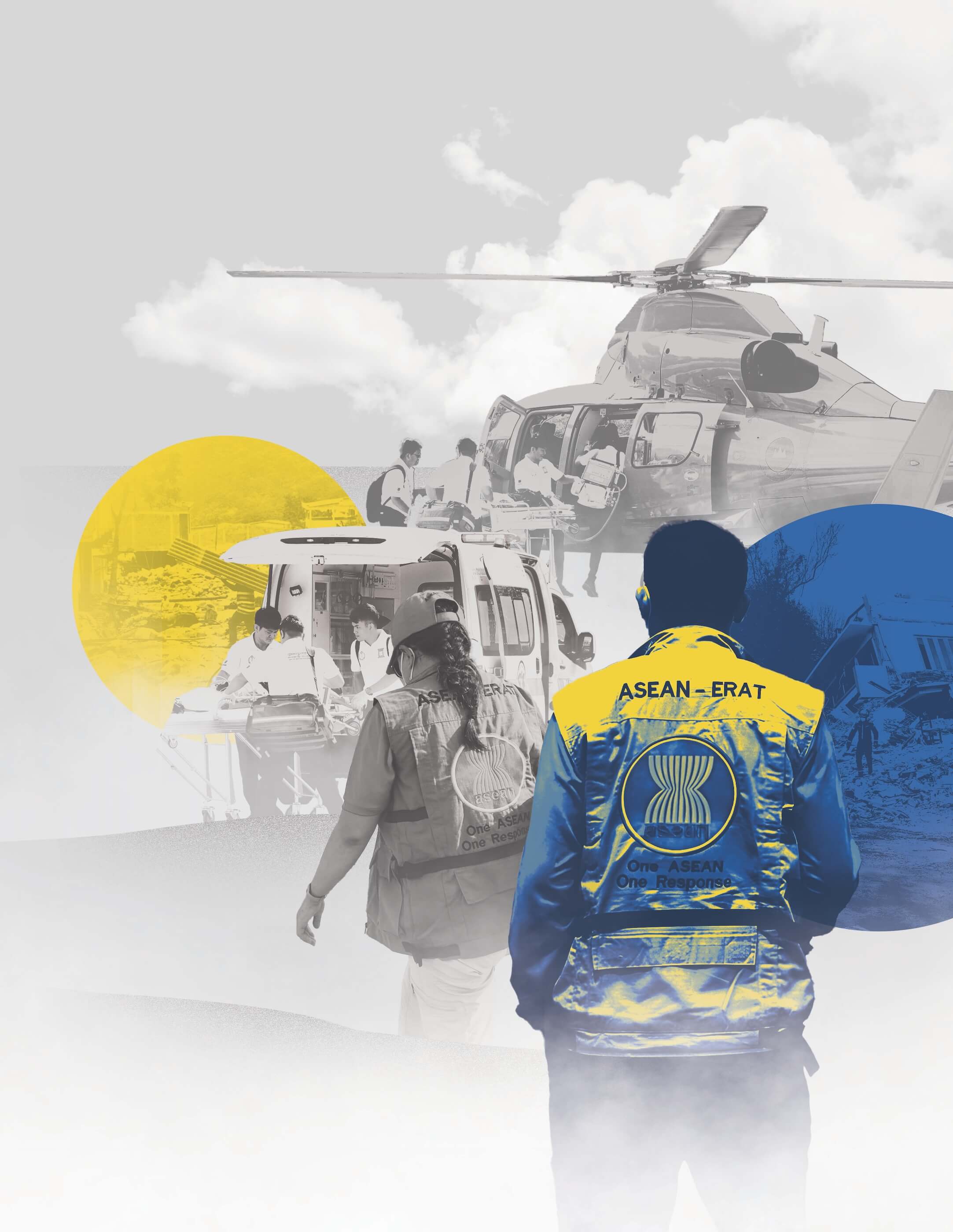


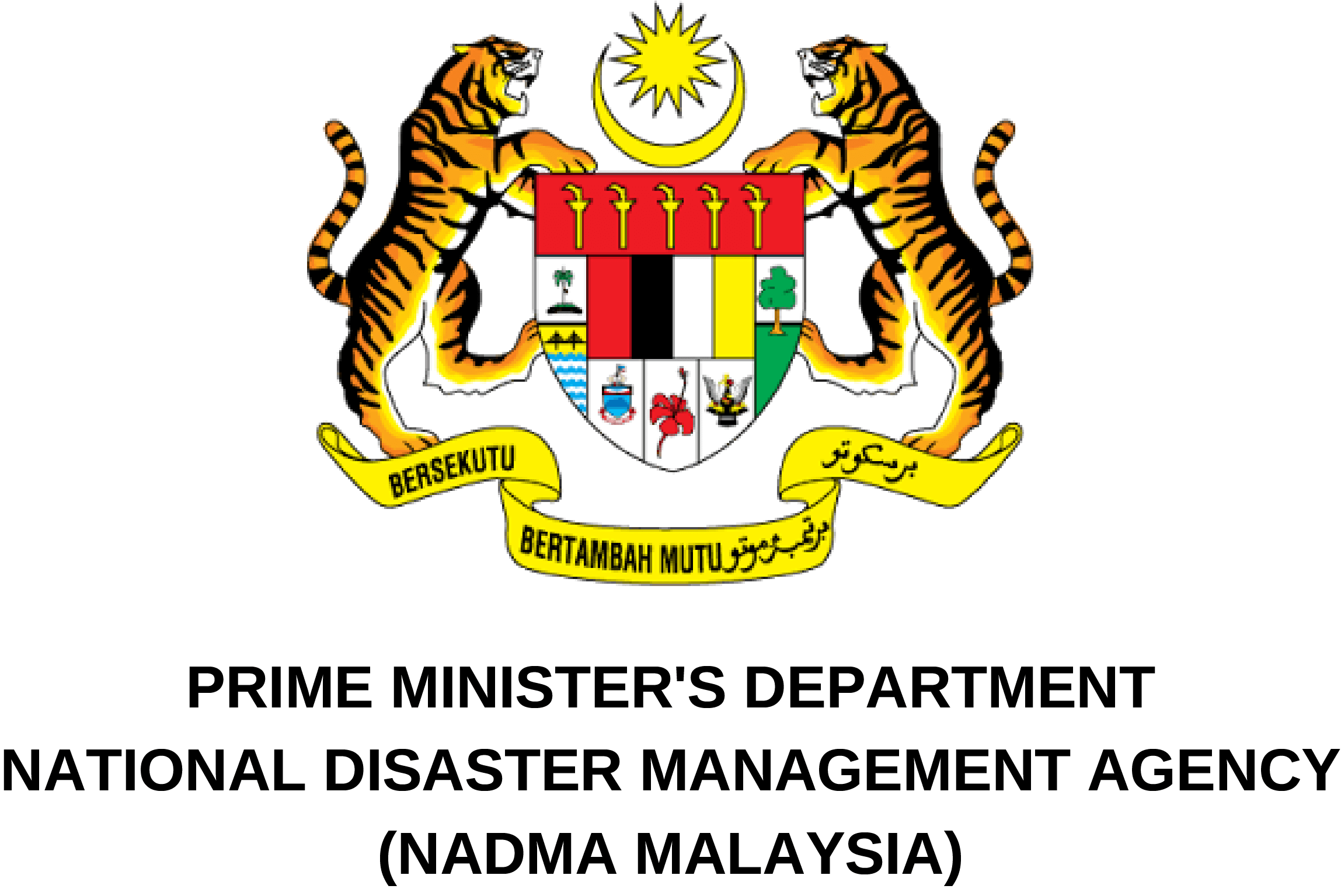
28 March 2025, Myanmar was shaken by a devastating 7.7 magnitude earthquake. The tremor struck at 12:50 pm local time (2:20 pm Malaysian time), with its epicentre in Sagaing Region, northwest Myanmar. As people were still reeling from the impact, a powerful 6.4 aftershock followed soon after, leaving widespread destruction in its wake.
The scale of the disaster demanded urgent international support. On the same day, Malaysia stepped forward. The Deputy Prime Minister, as Chairman of the National Disaster Management Committee, swiftly approved the deployment of Malaysia’s elite rescue team, the Special Malaysia Disaster Assistance and Rescue Team (SMART), to Myanmar on an Urban Search and Rescue mission.
The mobilisation was also aligned with the regional mechanism of the ASEAN Joint Disaster Response Plan (AJDRP) and the Standard Operating Procedure for Regional Standby Arrangements and Coordination of Joint Disaster Relief and Emergency Response Operations (SASOP), under which SMART serves as one of Malaysia’s earmarked response tools for regional emergencies.
The deployment, callsign MAS01 MyTeam Relief Operations, was not just another mission. It was the activation of an INSARAG-Classified Heavy Urban Search and Rescue (USAR) Team, mobilised within hours. Behind the scenes, the International Humanitarian Assistance and Disaster Relief (HADR) Working Committee, led by National Disaster Management Agency (NADMA) and comprising the Ministry of Foreign Affairs, Royal Malaysian Air Force, Fire and Rescue Department, Customs Department, Immigration Department and others, worked tirelessly to ensure everything moved like clockwork. Adding to the momentum, the Embassy of Myanmar in Kuala Lumpur graciously fast-tracked visas and flight permits. It was teamwork in its truest form.
At 8 am on 30 March, two Royal Malaysian Air Force A400M aircraft carried MAS01 into Nay Pyi Taw after a three-hour flight. MAS01 deployed with 50 personnel and 33 tons of cargo, including two 5-ton trucks and a 4×4 vehicle. The team brought together a perfect blend of expertise: 44 SMART officers, 2 HAZMAT specialists from the Fire and Rescue Department of Malaysia (JBPM), and 4 Malaysian Armed Forces medical professionals (two doctors and two paramedics). Together, they formed a self-sufficient force covering the five core USAR components: management, logistics, search, rescue, and medical.
But the real challenge awaited in Sagaing City, 250 km away. Damaged roads and tight security stretched the journey into an 11-hour ordeal, with the convoy escorted by police through 10 security checkpoints. Yet, in a heartwarming twist, local communities greeted the team with smiles and had even built makeshift shelters to welcome the Malaysian rescuers. By 1:30 am on 31 March, MAS01 had set up its Base of Operations (BoO) at Sagaing Football Field, just in time to celebrate Eid al-Fitr together far from home, turning a foreign field into a place of solidarity and faith.

For nine intense days, Sagaing became MAS01’s battlefield against time and rubble. At 11 worksites assigned by the Local Emergency Management Authority (LEMA), the team combed through collapsed buildings and unstable ruins under blistering heat, with temperatures ranging from 37°C to 41°C and amid ongoing aftershocks, recorded up to 102 tremors by 7 April. Their determination paid off: 11 victims were recovered, including one survivor brought out alive. That moment, when silence turned to cheers, was a powerful reminder of why this mission mattered.
The impact went far beyond numbers. MAS01 became a source of hope for locals, their professionalism and compassion earning praise not only from families of victims but also from Myanmar’s authorities and international partners. Compliments poured in, but the greatest reward was the trust and gratitude of the people they served.
Of course, no mission succeeds by chance. Internally, MAS01’s strength came from its training, discipline, and self-sufficiency, backed by strong home-based coordination from NADMA, the Ministry of Foreign Affairs, the Malaysian Embassy in Myanmar, RMAF, and, of course, continuous support from the AHA Centre, Myanmar’s National Disaster Management Committee (NDMC), and UNOCHA. Externally, the Government of Myanmar ensured safety, translators, and logistical support, while local communities embraced the team with warmth.
Just as important were the lessons beyond logistics and protocols. Cultural sensitivity, respect, and genuine listening became powerful tools for effective communication. The Malaysians did not just bring equipment; they brought humility, cooperation, and friendship. That spirit turned an international mission into a shared human journey.
On 4 April, the Myanmar Government officially declared the end of the search and rescue phase and the start of recovery phase. MAS01 wrapped up its mission on 5 April and flew home on 7 April 2025. They returned not only as rescuers but also as living proof of Malaysia’s unwavering commitment to humanity.
Contributing writers from the National Disaster Management Agency, Prime Minister’s Department, Malaysia: Che Siti Noor binti Che Mamat, Principal Assistant Director/HADR Desk- Officer, Operations Coordination Division; Safrizan bin Suhaini, SMART Team Head of Logistics Special Malaysia Disaster Assistance and Rescue Team (SMART); and Addyhanis bin Ahamad, Director, Operations Coordination Division




